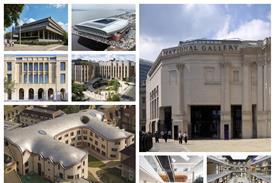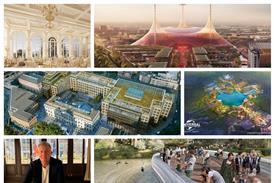The consultation on the ARB’s new code of conduct offers a chance to shape the future of architecture, but with a recent workplace culture survey revealing widespread issues such as bullying, harassment, and discrimination, Chris Simmons questions whether the proposed revisions go far enough to address the profession’s deeper problems

With the consultation for the latest ARB code of conduct closing on 12th December, architects and those in and around the industry need to take this opportunity to provide input on the future of the profession and have their opinions heard.
The revised code comes at a difficult but pertinent time for the profession, following the fallout from the Grenfell inquiry and the results from ARB-commissioned independent surveys looking both internally and externally at the profession. While the public-facing Professionalism in Architecture survey highlighted clear requirements around architects’ technical ability and responsibilities to public safety, the recently released internal examination Workplace Culture has painted a much bleaker picture.
The survey of approximately 900 people across different strata of the profession has crystallised a worrying number of internal issues. The survey by Thinks Insight & Strategy found that “Experiences of harassment & bullying (41%), discrimination (33%) and sexual misconduct (10%) are high, compared to all UK workplaces, and higher still for females, ethnic minorities and those with disabilities.”
>> Also read: Arb research uncovers ‘staggering’ levels of discrimination and sexual misconduct in the architecture profession
This damning indictment aligns with what many within the profession have witnessed or, for some, experienced in their careers. To many, it feels as though these negative behaviours and unrealistic work practices have become the accepted norm. Within my work as a career coach, I speak with an ever-increasing number of architects (particularly students and early-career architects) who share similar experiences within their roles, with many searching for routes out of the profession.

Within this overarching context, the ARB is strong out of the gate, acknowledging the worrying statistics and prompting a change to the regulations. However, what follows within the body of the code of conduct is a disappointing streamlining of the standards, with many terms so vague and ambiguous that the ARB will have little ability to police the negative behaviours for which we have seen so much evidence.
The reshuffled six areas – Honesty & Integrity, Public Interest, Competence, Professional Practice, Communication & Collaboration, and Respect – touch lightly upon their topics and appear to focus primarily on client-based concerns. While I acknowledge the importance of this element, this focus should not come at the detriment of our own workers. The “Respect” section of the code attempts to address the workplace in some way but again uses terms that are trite and unspecific, failing to hold anyone to account.
Interestingly, timely questions around the ethics of working for certain clients of questionable backgrounds are not addressed within this latest revision. The strangest omission, however, is the removal of an architect’s duty to sustainability, which seemingly erases any obligation to “conserve and enhance the quality of the environment and its natural resources.”
As noted by the ARB: “The Architects Code is a fundamental text for all architects that defines the principles that they should hold themselves and colleagues to. It explains an architect’s commitments to their clients and the public and provides a clear framework for safe, ethical and effective practice.” Despite this acknowledgement, the current code has allowed these ongoing workplace issues to fester, with many in the profession considering it too open to interpretation already.
We need to attack these issues from above and below
With the workplace survey evidencing such hard-hitting statistics and admitting that in some areas our industry is much worse than typical, it is disappointing that the latest code takes such a loose approach to its wording. This process seems to follow the trends of the ARB CPD scheme launching in January 2024 – well-meaning but flawed. An opportunity to bring about welcome change, but failing to implement it in a meaningful way that is rigorous enough to improve and protect the profession.
I want to see controls on how architects should handle internal complaints, requirements for dedicated HR, ethical behaviour in terms of client backgrounds, and acknowledgement of the moves made in the Worker Protection (Amendment of Equality Act 2010) Act 2023. It would be even better for the ARB to recognise some semblance of work-life balance, health and wellbeing, or overtime limitations, alongside their light-touch requirements for architects to be ‘polite and considerate.’
While a change to the ARB code is only a small piece of this complex puzzle in our attempts to improve the profession, it feels like a key starting point to get right. This needs to be our manifesto – the piece of paper that we as professionals are meant to be held to – so we need some rigour. After all, without the protection of function, architects rely heavily on promoting their professional abilities and standards in their value proposition to clients. But what value does this higher standard of quality assurance and experience have if we are different behind the closed doors of the office?
We need to attack these issues from above and below. While the attempted change to the regulations is recognised, we most importantly need a cultural shift led by us as architects and employees. We need to hold ourselves accountable and admit that these issues should not exist – we need to do more.
The first step is commenting on this code of conduct. I urge you to take 10 minutes out of your day to engage with the consultation. The current architecture profession is broken – we need to design a better one.
>> Also read: ARB’s code of conduct overhaul calls for architects to step up
Postscript
Chris Simmons is the founder of Architects Instruction, and focuses on mentoring and support for early career architects and designers
















No comments yet